CultureBreaking NewsFeature Story
A soulful glance of musical journey of Aparajita Deb through the canvas of Dr. Himabrata Das

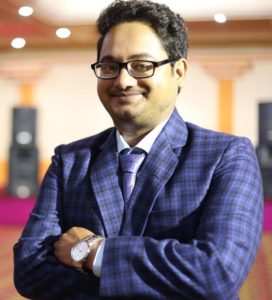
April 27: For a doctor by profession, transgressing the bounds of sports and then to culture seems to be a kaleidoscopic journey with many favorite halts. A jocund company with performers in the field or stage is something which enthralls my consciousness. Many might wonder my shift in liking from sports to culture to be something weird. But on a serious introspection, one can easily realise that performance knows no boundary, and for a vivid observer, stage and a field are all the same. This piece is one such exploration in the life of a performer who candidly spoke not only about pulse, tempo and rhythm but also about basic human traits.

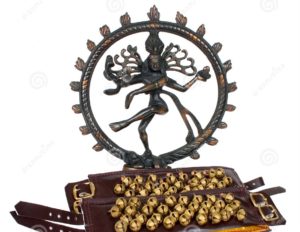 I am taken on a trip down memory lane by the marvelous Aparajita Didi (Aparajita Deb Choudhury), one of the brightest stars from the cultural sphere of the frontier town of Karimganj. Although best known for her dancing, AD spent a lot of time doing recitation and anchoring,working for Doordarshan Kendra Silchar and doing some pioneering media work in Kolaz,a local TV show in Karimganj. The show went on for about 3 years and was a game-changer that the audience really appreciated. It kicked off on Independence Day with an open air interactive session with the people of Karimganj, a rickshaw puller also featuring in the debut.
I am taken on a trip down memory lane by the marvelous Aparajita Didi (Aparajita Deb Choudhury), one of the brightest stars from the cultural sphere of the frontier town of Karimganj. Although best known for her dancing, AD spent a lot of time doing recitation and anchoring,working for Doordarshan Kendra Silchar and doing some pioneering media work in Kolaz,a local TV show in Karimganj. The show went on for about 3 years and was a game-changer that the audience really appreciated. It kicked off on Independence Day with an open air interactive session with the people of Karimganj, a rickshaw puller also featuring in the debut.
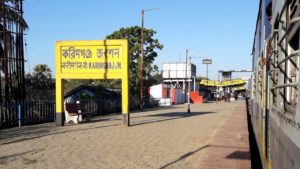 AD created history by going live from the Madhya Karimganj Puja Mandap during the Durga Puja festivities. Their Bangla noboborsho programme had the who’s who of the intelligentsia in attendance including the respected Dr Radhika Ranjan Sir. AD would challenge the limits of technology by going live again on New Year with a composition that included 30 performers performing live. Kolaz had a variety of segments viz. travel, game shows for families, interviews and special programmes to commemorate significant occasions. The most loved segment was Shohorer Shera Para and AD would get phone calls from every locality of the frontier town to conduct the show.
AD created history by going live from the Madhya Karimganj Puja Mandap during the Durga Puja festivities. Their Bangla noboborsho programme had the who’s who of the intelligentsia in attendance including the respected Dr Radhika Ranjan Sir. AD would challenge the limits of technology by going live again on New Year with a composition that included 30 performers performing live. Kolaz had a variety of segments viz. travel, game shows for families, interviews and special programmes to commemorate significant occasions. The most loved segment was Shohorer Shera Para and AD would get phone calls from every locality of the frontier town to conduct the show.
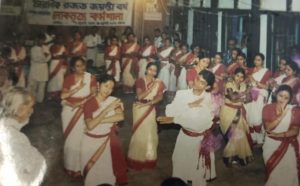 “It’s very important to work on your pronunciation as an anchor. You also need to have an instant presence of mind and most importantly a connect with your audience”, AD says about anchoring. AD, who first performed on stage at the age of 5, realises the divine and the supernatural aspect of every performance. “Growing up, I realised that God Almighty invisibly watches the devotee’s performance. With maturity, you realise that the audience is a manifestation of God and that increases your dedication”, AD makes a deep observation.
“It’s very important to work on your pronunciation as an anchor. You also need to have an instant presence of mind and most importantly a connect with your audience”, AD says about anchoring. AD, who first performed on stage at the age of 5, realises the divine and the supernatural aspect of every performance. “Growing up, I realised that God Almighty invisibly watches the devotee’s performance. With maturity, you realise that the audience is a manifestation of God and that increases your dedication”, AD makes a deep observation.
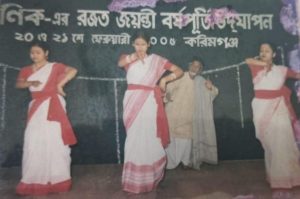 “I do value small happiness and believe that we should be satisfied with whatever we have, as there are others who are less fortunate. In the last 15 years, one life lesson that I have learnt is that half of the problems of life could be solved if we stop criticising others and start criticizing ourselves. Success means different things to different people. For me being successful means to be in a position where you can help others. Name and fame are important, but having the right value system is even more important. My folk dance guru the late Mukunda Das Bhattacharjee used to say that a successful artist is like a tree that bears fruits and is comfortable being close to the ground. Humility is the true sign of genius.If the same fruit-bearing tree wishes to stay upright despite the load, the tree will break. Pride and vanity are the enemies of creative people. “AD mentions the following as her top 5 stage performances:
“I do value small happiness and believe that we should be satisfied with whatever we have, as there are others who are less fortunate. In the last 15 years, one life lesson that I have learnt is that half of the problems of life could be solved if we stop criticising others and start criticizing ourselves. Success means different things to different people. For me being successful means to be in a position where you can help others. Name and fame are important, but having the right value system is even more important. My folk dance guru the late Mukunda Das Bhattacharjee used to say that a successful artist is like a tree that bears fruits and is comfortable being close to the ground. Humility is the true sign of genius.If the same fruit-bearing tree wishes to stay upright despite the load, the tree will break. Pride and vanity are the enemies of creative people. “AD mentions the following as her top 5 stage performances:
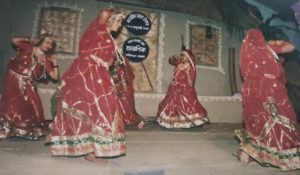
- Winning the first prize in the first competition I had participated in on the occasion of borshoboron of the Bengali year 1400
- Performing Ojha dance without any formal training of the dance form at the Silver Jubilee of Nilmoni school. The standing ovation from the audience was very satisfying.
- Performing Marathi Lavani under the guidance of the God of Folk Dance, the late Mukunda Das Bhattacharjee
- The first dance performance by my group Nikkan that I choreographed inspired by my mother who is a fighter. We performed on Nazrul Jayanti at the Ramani Mohan Institution. I had performed “Partha Sarathi bajao bajao” solo and the first group dance was set to the tunes of “Aajo modhuro baashi baaje”.
- My semi-classical performance at District Library Auditorium. My daughter was only 18 months old at the time. And I had put on a lot of weight after her birth. My husband was very happy to see me perform. He,along with my mother, has always pushed me to make my self-identity.
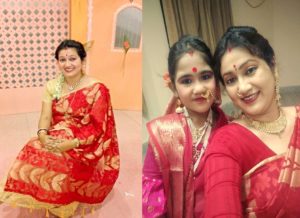 “I did my masters in Rabindra dance and I also learnt folk dance. I had started learning Kathak but could not complete as I joined a job”, continues AD. Talking about the different forms of dance, she adds, “Classical dance is the base, while folk dance is specific to a particular region and lets you learn about the rich cultural diversity of India. We have our dhamail in the Barak Valley, Punjab has bhangra and gidda, Rajasthan has ghoomar and Bengal has chaw nach. Assam is of course synonymous with Bihu.
“I did my masters in Rabindra dance and I also learnt folk dance. I had started learning Kathak but could not complete as I joined a job”, continues AD. Talking about the different forms of dance, she adds, “Classical dance is the base, while folk dance is specific to a particular region and lets you learn about the rich cultural diversity of India. We have our dhamail in the Barak Valley, Punjab has bhangra and gidda, Rajasthan has ghoomar and Bengal has chaw nach. Assam is of course synonymous with Bihu.
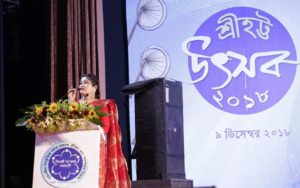 Contemporary dance has given the art form a different language, where body language is equally important as mudra and expression .Also flexibility and self-expression are added musts for this dance form. And lastly, fusion is a very lovely and lively platform where you are free to express yourself with no boundaries. You can mix all the forms to create an extraordinary magic. “AD considers her gurus her mother Sulekha Dutta Choudhury and late Mukunda Das Bhattacharjee as her biggest influences in the sphere of dance. “Apart from them, I have been highly inspired by Madhuri Dixit. She is simply wow in any form of dancing”,she says passionately.
Contemporary dance has given the art form a different language, where body language is equally important as mudra and expression .Also flexibility and self-expression are added musts for this dance form. And lastly, fusion is a very lovely and lively platform where you are free to express yourself with no boundaries. You can mix all the forms to create an extraordinary magic. “AD considers her gurus her mother Sulekha Dutta Choudhury and late Mukunda Das Bhattacharjee as her biggest influences in the sphere of dance. “Apart from them, I have been highly inspired by Madhuri Dixit. She is simply wow in any form of dancing”,she says passionately.
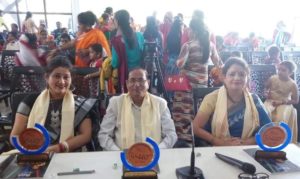 On the auspicious occasion of Akshay Tritiya, which is considered the day when Lord Ganesh started writing the Mahabharat, AD ruminates about her hometown from her house in Ganeshguri. She mentions her favourite neighbourhoods of Karimganj-Red Cross Road, Longai Road, Bonomali, Nilmoni Road, Subhash Nagar, Laxmi Charan Road and Tilla Bazar.
On the auspicious occasion of Akshay Tritiya, which is considered the day when Lord Ganesh started writing the Mahabharat, AD ruminates about her hometown from her house in Ganeshguri. She mentions her favourite neighbourhoods of Karimganj-Red Cross Road, Longai Road, Bonomali, Nilmoni Road, Subhash Nagar, Laxmi Charan Road and Tilla Bazar.
 We end the conversation on a lighthearted note talking about the subtle cultural differences between Silchar and Karimganj. “We have Bhai Photo for 2 days, Bisorjon for 3 days and we came first in the COVID-19 pandemic also. No where else is a rickshaw puller addressed Driver. Ijjot na dile tumare loiya jaito na (Unless you show him respect, he won’t take you to your destination)”. I burst into peals of laughter at the characteristic Karimganji sense of humour from a truly remarkable personality.
We end the conversation on a lighthearted note talking about the subtle cultural differences between Silchar and Karimganj. “We have Bhai Photo for 2 days, Bisorjon for 3 days and we came first in the COVID-19 pandemic also. No where else is a rickshaw puller addressed Driver. Ijjot na dile tumare loiya jaito na (Unless you show him respect, he won’t take you to your destination)”. I burst into peals of laughter at the characteristic Karimganji sense of humour from a truly remarkable personality.





